|
|
#8 |
|
Members
Join Date: Oct 2009
Posts: 153
|
Hi all,
While browsing, once more, through my copy of Lentz and Lowry’s outstanding and superbly illustrated book «Timur and the Princely Vision (1), I was happy to find the following comments about Timurid rugs. Apparently this dilettante wasn’t walking on too thin ice after all.  I have taken the liberty to add some suitable additional illustrations and a few comments to their text. Page 220 «……The kitabkhana was also involved in the design of royal carpets….» «…Evidence from paintings (miniatures) shows two dominant groups of Timurid carpets: an earlier geometric tradition, featuring inner fields with small repeating patterns edged with kufic-inspired borders…» FIG 1. Timurid. 1429. Herat school. Baysungur in a garden. Detail .  By the way, this design obviously even pre-dates the Timurid Empire in Persia, since as Filiberto rightly once noted, miniatures of the Jalayirid and -Chubanid periods (2) already do feature it. FIG 2. Chubanid period. 1370-1375. Tabriz school. The cobbler cuts the nose of the barber’s wife. Topkapi. Istanbul. 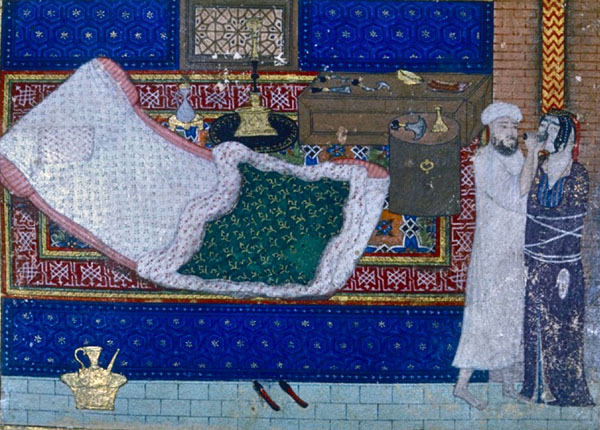 «…and later arabesque carpets, their designs featuring variations of circles and cartouches edged with arabesques…» FIG 3. 1488. Late Timurid period. Herat school. Party at the Court of Huseyn Mirza.Detail. 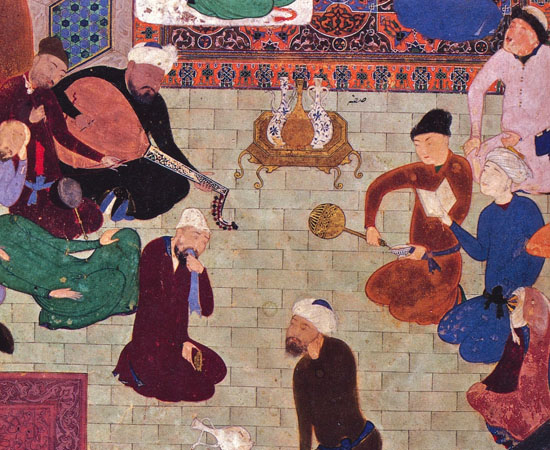 FIG 4. 1445-1446, Timurid. Herat school. Khusraw receives Farhad. 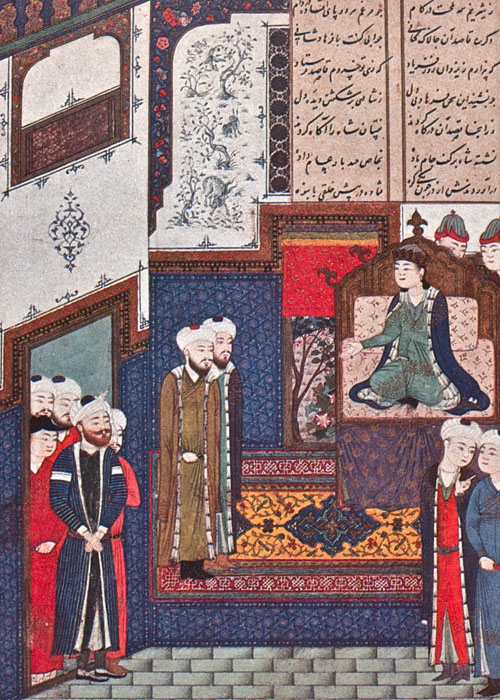 «…These later fifteenth century arabesque examples have affinities with kitabkhana efforts in book illumination and would serve as the basis of the spectacular Safavid carpet tradition, …» And to the Ottoman tradition to boot, if I may add. FIG 5. Illuminated panel from a Bustan of Sa’adi (detail). Herat 1488. Timur and the Princely Vision, page 190. 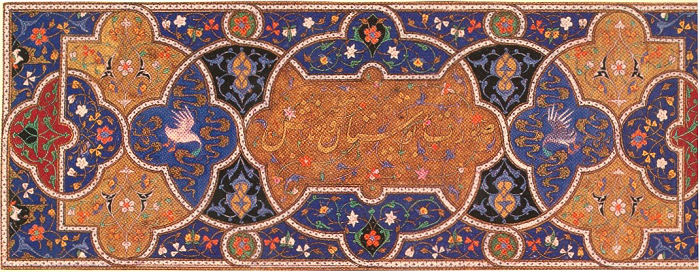 FIG 6. Illuminated page from a Khamsa of Nizami. Herat. 1431.Timur and the Princely Vision, page 205. 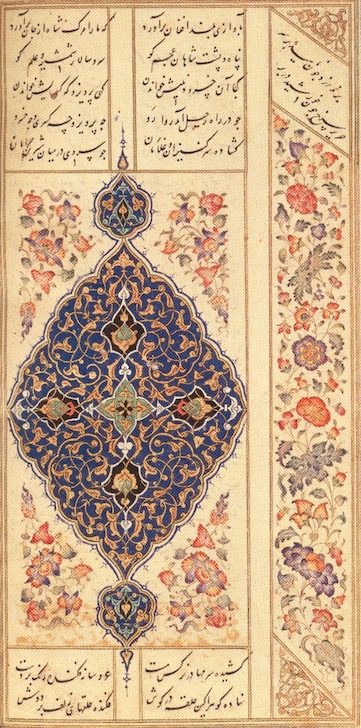 FIG 7. Ottoman Court rug. Selim II ascent to the throne.  «….but the same cannot be said of the geometric examples, whose vigorous, knotted forms may represent an older nomadic strain, one stubbornly resistant to the aestheticism of court art….» Page 221 «…Despite their ubiquity in contemporary painting, there are no generally recognized surviving Timurid carpets. (2) The painted depictions of these geometric carpets, however, show remarkable similarities to the small- pattern Holbein carpets (as well as the related Damascus, or so called Para-Mamluk, carpets)….» FIG 8. 15th century. Small Holbein pattern. «Vakiflar Museum Teppiche», B. Balpinar & U. Hirsch.  FIG 9. 1460. Botticelli. F. de Montefeltre and Landino. Vatican. 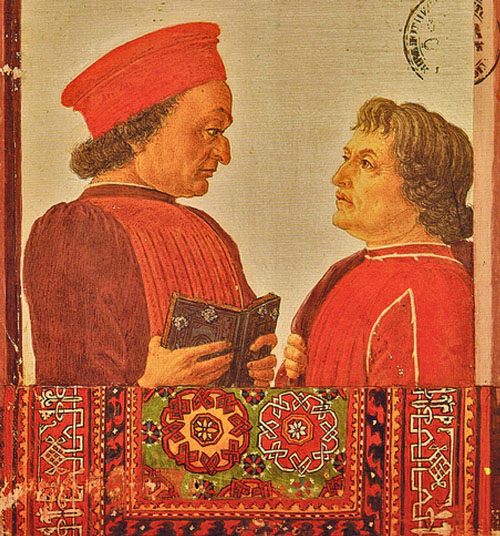 «…..Said to be from Ottoman Asia Minor, these small-pattern Holbein examples were especially favored in western Europe and are found in paintings there from the 1450s. Little is known of the origin of their design or the provenance of the carpets, but the patterns and colors often reflect Timurid taste and designs. Since current research suggests that many small pattern Holbein carpets can now dated to the fifteenth rather than sixteenth century, (3) some of the roughly fifty surviving intact or fragmentary examples may be Timurid. While past research has emphasized knotting technique to demonstrate provenance, carpet weavers captured during Timurid campaigns would have continued to weave in the technique in which they were trained. ….» References (1) T.W. Lentz &G.D. Lowry. «Timur and the Princely Vision. Persian Art and Culture in the Fifteenth century» 1989. Smithsonian Press. (2) The Chubanid- (In northwestern Iran) and Jalayirid- (around Baghdad) States were splinters from the decadent Il-khanid State. Both were terminated by Timur. (3) F. Spuhler «Carpets and Textiles» in the Cambridge History of Iran. 1986.,6, 698-700. (4) R. Pinner & J. Stanger «Kufik borders on Small Pattern Holbein» Hali I, 1978, 335-358.. Last edited by Pierre Galafassi; February 21st, 2017 at 04:20 PM. |
|
|

|
|
|